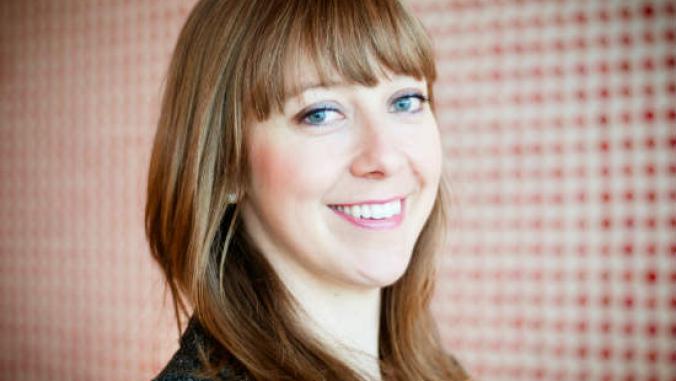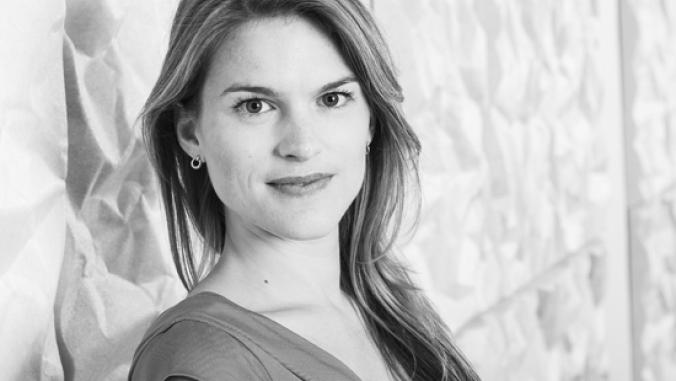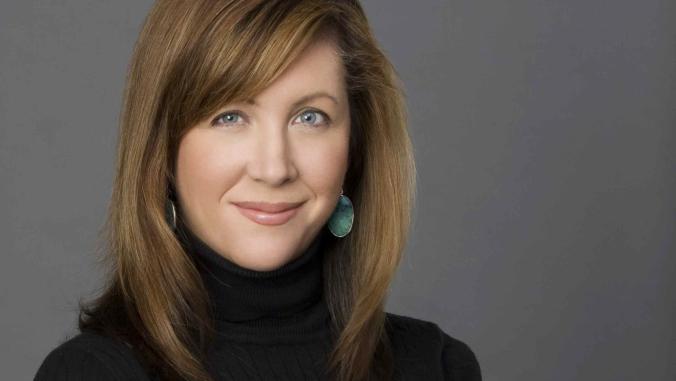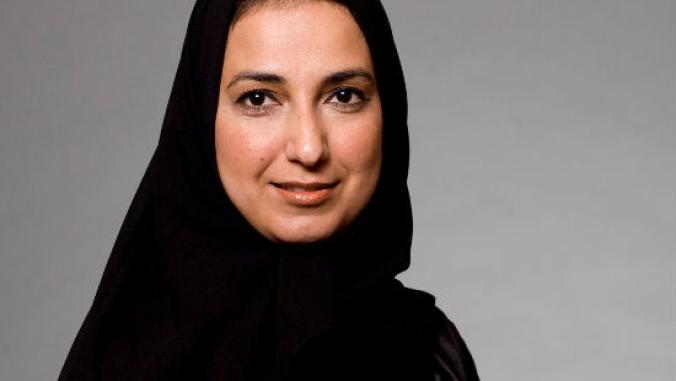How She Leads: Gap's Kindley Walsh Lawlor
<p>The clothing retailer's vice president of social and environmental responsibility talks about the goals in Gap's just-released CSR report and why the apparel industry can make a significant impact on a global scale.</p>

How She Leads is a regular feature on GreenBiz.com that spotlights the career paths of women who have moved into influential roles in sustainable business. In tandem with the release of Gap Inc.'s fifth Social and Environmental Responsibility (SER) report today, Maya Albanese interviews Kindley Walsh Lawlor, VP of Social and Environmental Responsibility.
Gap Inc. operates about 3,100 stores worldwide with more than 134,000 employees, and is the company behind such iconic brands as GapKids, BabyGap, GapBody, Banana Republic, Old Navy, Athleta, and Piperlime. The company was founded in 1969 with just a single store in San Francisco. Gap monitors factories in about 50 countries each year and has established a Water Quality Program to monitor the denim laundries' wastewater discharge.
The company has a comprehensive approach to environmental responsibility by focusing on three areas where the greatest positive impact can be made: reducing energy use, shifting to more sustainable design, and reducing waste.
Lawlor highlights key announcements in the company's new report including Gap's commitment to reduce absolute greenhouse gas emissions by 20 percent throughout its U.S. operations by 2015, compared to 2008 levels. Lawlor explains why the apparel industry is positioned to make a significant social and environmental impact on business operations at a global scale.
Maya Albanese: Let's start off with a bit of your background -- what is your history at Gap, and how did you acquire your current role?
Kindley Walsh Lawlor: Almost 15 years ago, I started at Gap Inc. in men's production at the Banana Republic brand and then moved to Gap brand where I then covered all of adult apparel. I was very intrigued by my travels to visit various stakeholders and left with a lot of unanswered questions.
When I joined the company, there was a Corporate Social Responsibility (CSR) department, so I called the head of CSR and asked if we could collaborate on something. We ended up working together on an internal brand engagement project with the Ethical Trading Initiative (ETI). The work we did on purchasing practices is still very important to how business decisions impact the lives of workers.
By that point, the issues had gotten under my skin -- and that's an understatement. I was going out on maternity leave with my first child, and I knew I wanted a different purpose when I returned. I started in the CSR department almost 5 years ago after returning from leave.
MA: Why do you feel strongly about working for social and environmental responsibility in the business?
KWL: I've always had a deep-seated connection to the Earth, since I grew up on a family farm in Vermont, accustomed to growing all our fruits and veggies ourselves and being around animals all the time. I chose to move from northern Vermont to New York City to pursue a fashion degree, which seems like the polar opposite.
The first companies I worked for out of school were ski and snowboard apparel companies, so I was able to connect fashion to being outdoors from the beginning of my career. I also believe that business must play a key role in narrowing the inequities in the world. It doesn't matter where you come from or who you are, all human beings deserve fair and ethical treatment. This is something I feel very personal about, that I come in to work every day for.
MA: Why is apparel such an important industry to "clean up?"
KWL: As an apparel company, it's typical to have a very big global footprint, and so we have the opportunity to make some of the most significant changes. Our products start in a field somewhere and don't end until the consumer disposes of the final product.
For example, at the "cut-sew level" of the supply chain, we focus most heavily on human rights. We have a 700-point code that we check in all of our factories, which includes social and environmental criteria. The data have also shown us another area where we have the opportunity to make a big impact is the water that comes out of the textile laundries. So at the 'fabric mill level' of the supply chain, we are working with NRDC on environmental responsibility and Textile Mills Best Practices through their Responsible Sourcing Initiative.
MA: Gap Inc. has had a turbulent history in social responsibility. But Corporate Responsibility Magazine recently ranked your company at #11 on a list of the 100 Best Corporate Citizens. How has the company managed to make such a sweeping turnaround in the last decade?
KWL: I think that there was a real learning moment for the apparel industry about 18-20 years ago. Labor groups were getting stronger voices, and companies were finally sitting up and realizing that they needed to take notice of what was happening to the people working in their factories.
When I talk to colleagues who have been here for 20 years or more, they describe how they began to set up parameters and write a robust code of vendor conduct. But that wasn't enough. We set up internal audit teams made up of locals who spoke the language and could work directly with the factories. But that wasn't enough. Then we realized the importance of stakeholder engagement.
We started our compliance work almost 20 years ago, and it took a long time before we were talking to all stakeholders in a very open way -- labor groups, unions, NGO's, etc. This was the moment in the whole apparel industry, not just at Gap Inc.
An example is when a labor group in Washington, D.C. with a very loud voice began campaigning against us, and we decided to turn to them and begin to communicate openly. We needed an enormous group of people and resources to drive change. Multi-stakeholder initiatives have become such an important way of making this change happen.
We now touch over a million workers every day in 1,200 factories in 50 countries all over the world. Don and Doris, the couple that founded Gap Inc., always said "let's do something more than just sell clothes." The company is still saying this today.
MA: What has been your most effective program for engaging employees?
KWL: I see employees who have a core concern about their impact, and they are approaching us asking what they can differently to make a positive impact.
For example, we reached out to all stores across the brands and started a sustainable store design initiative. We found that the stores were already focused on using low-VOC paints, LED lights, etc. But we pulled together a forum for idea exchanges and formalized the process more, and people got so excited on these store design teams. In fact, at least eight employees became LEED-accredited professionals as a result.
MA: Gap Inc. has been a leader in public CSR reporting. When was the first report published, and why was it so significant?
KWL: We first reported publicly in 2003 but we had been measuring our impact for over 7 years. We wanted to wait to make sure we were measuring correctly before we publicized it. It was the first time an apparel company had published such an in-depth transparent look at working conditions in the garment factories. We were very honest about what we had found out there. We were most concerned about what we alone couldn't change. Today marks our fifth SER report.
MA: What are some of the most important updates in this report?
KWL: We've put in an interactive map that gives a snapshot of some of the projects we're working on around the world, and there's a data dashboard you can see on our CSR website
Some highlights of the report include:
- A formalized human rights policy that strengthens our current code of vendor conduct and code of business conduct.
- A reduction target of 20 percent in absolute GHG emissions across US owned and operated facilities, including all stores.
- 100 percent of our branded denim to be made in compliance with our Water Quality Program, which means the laundries we work with are ensuring that their waste water is properly treated before being discharged.
MA: What is an area that Gap Inc. needs to improve upon?
KWL: We are heavily focused on monitoring and auditing at the cut-sew level. Auditing is not going to change workers lives in a revolutionary way. The audits have already shifted to capacity building. We're helping to resolve issues and prevent future problems, so that they don't require continuous oversight.
We also started our environmental focus later than the human rights, so we have a long way to go on environmental initiatives at the factory-level. Water is the main issue, and we recently supported a Water Roundtable at Haas Center for Responsible Business where we brought in water experts to address water use and conservation within the supply chain.
From a very apparel-centric standpoint, the next big issue in sustainability is going to be water. We all have a collective responsibility to start making some big changes. Gap Inc. is in the midst of crafting a water strategy right now.
MA: What advice would you give to other sustainability professionals trying to quantify and qualify the difference they've made through such initiatives?
KWL: We have to share our stories and express that we're doing the best we can. Social media and our website are communications tools that are important to tell the stories and illustrate case studies.
I think that advocacy organizations have done a terrific job illustrating the issues and empowering to consumers to make the right decisions. For example, Global Action Through Fashion also based in San Francisco and Free2Work are trusted organizations that consumers are looking to for valid information.
MA: What are you most proud of accomplishing in your role at Gap?
KWL: I'm very proud to be able to lead a team of 75 people across the world who work around the clock to improve workers' lives. I love seeing how rewarding it is for employees to make a positive difference simply by making different decisions in their day-to-day business.
In particular, I'm proud of work we've done with a women's community center in India. The center oversees sewing circles of women to make sure they're working proper hours and paid fair wages. What we've found is that the first thing they're spending their income on is their daughters' education.
MA: What advice could you give other professionals aspiring to attain similar sustainable development roles?
KWL: I have had such a spider web career that led me here. I speak with a lot of students and people who want to step in to this space. People enter from all different angles -- international organizations, SRI's, and graduate programs.
Don Fisher passed away in the Fall of 2009, and he used to say over and over again: "do what you love."
That was his mantra. Knowing that the couple that founded this company felt that innate sense that doing what you believe in is so important, I have loved every part of my career at this company.





